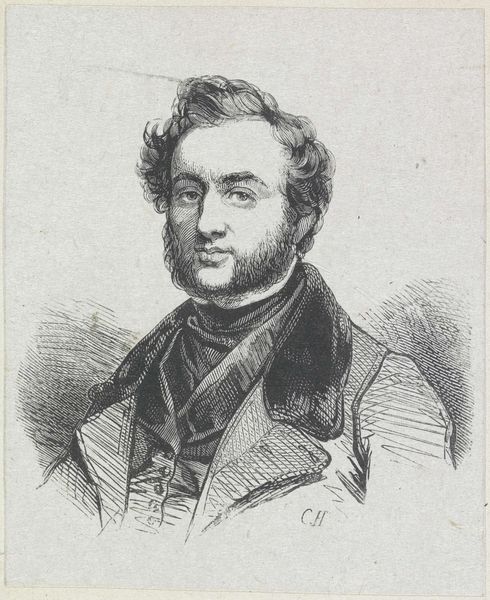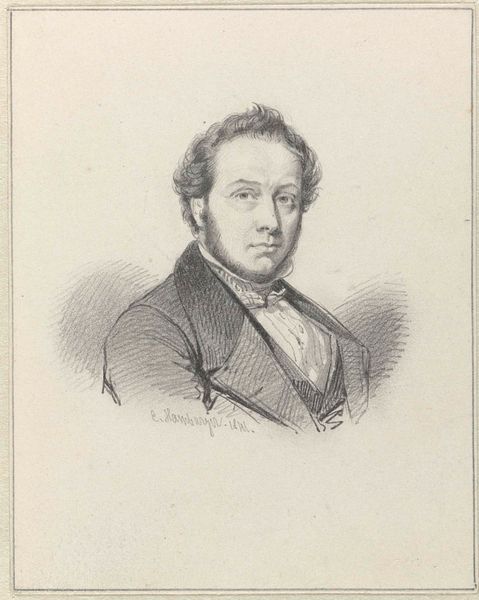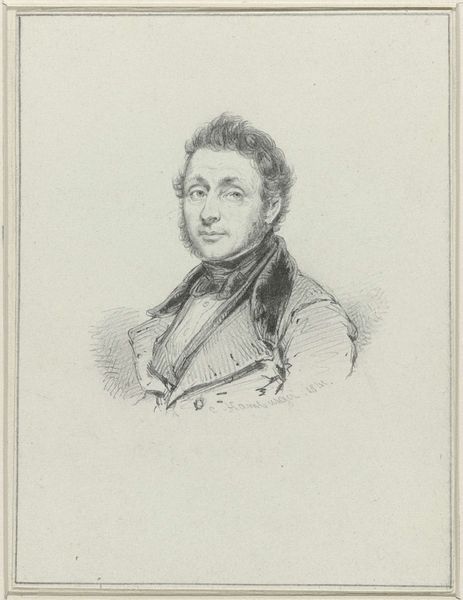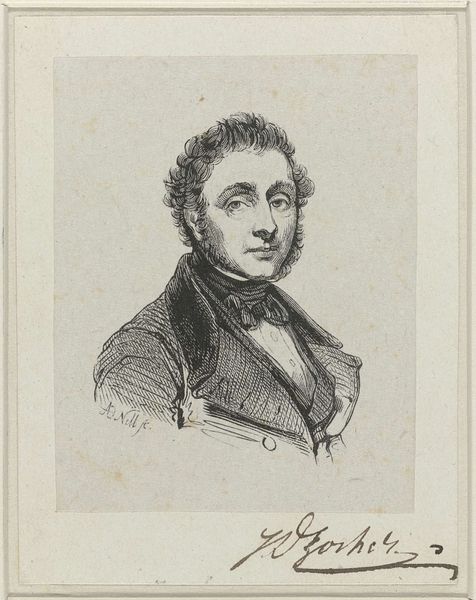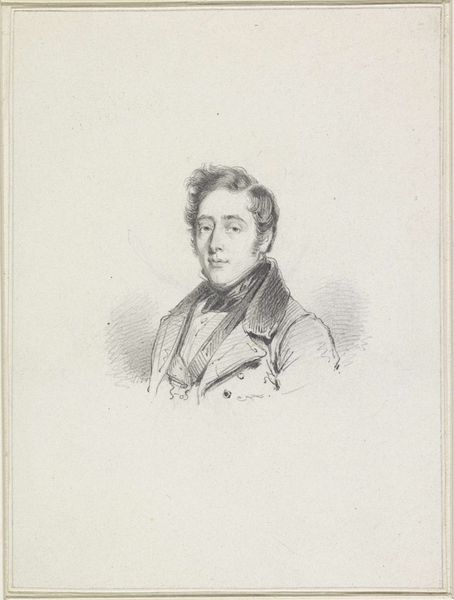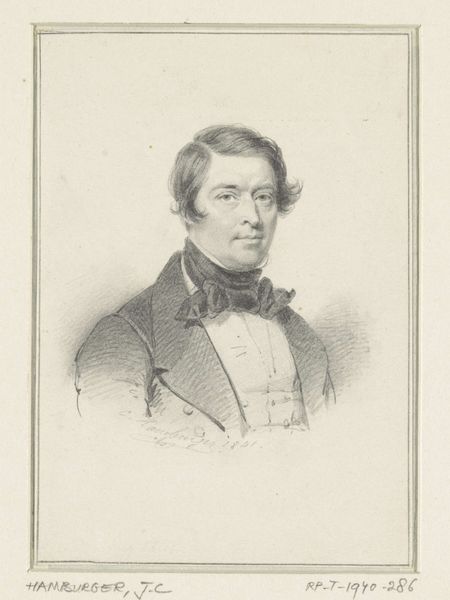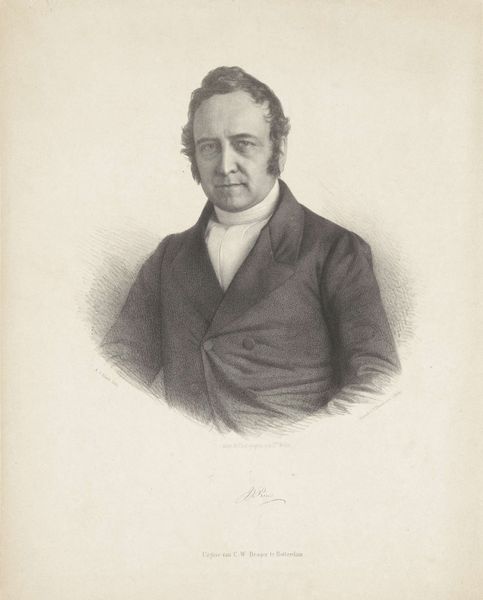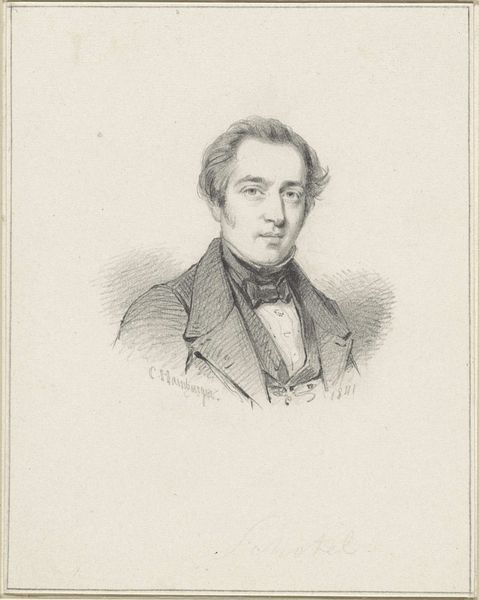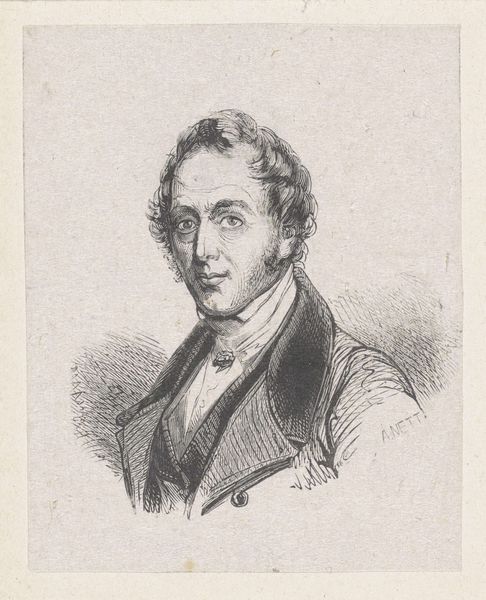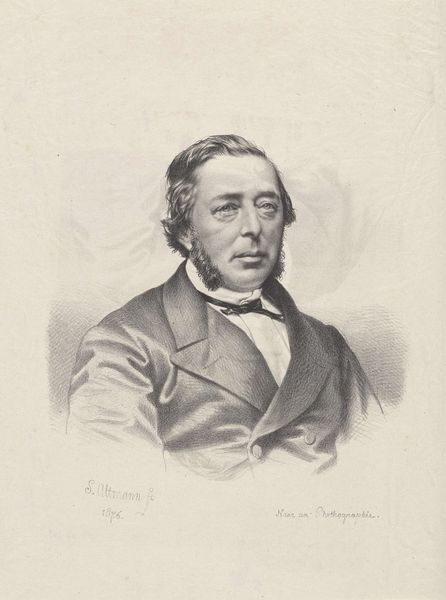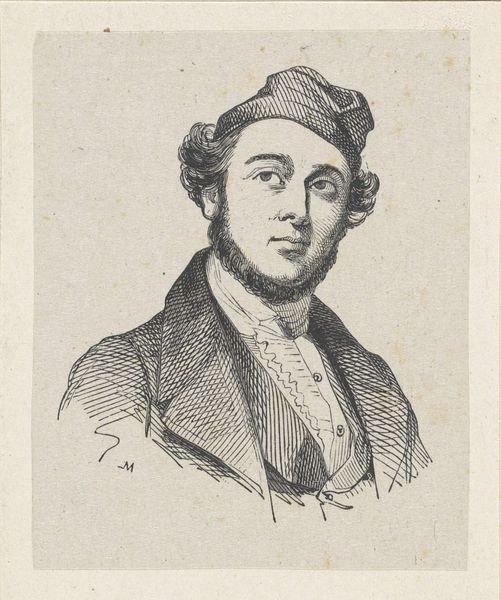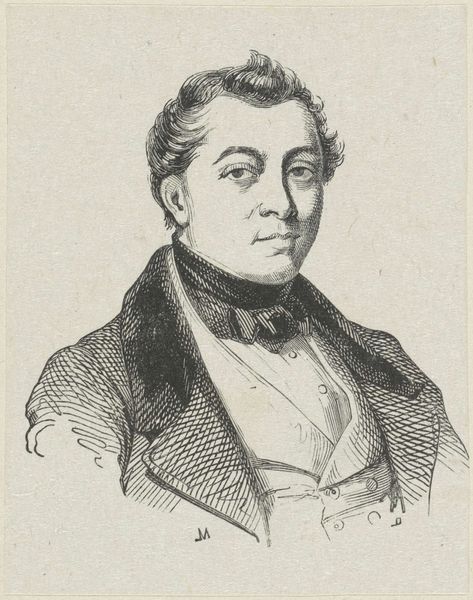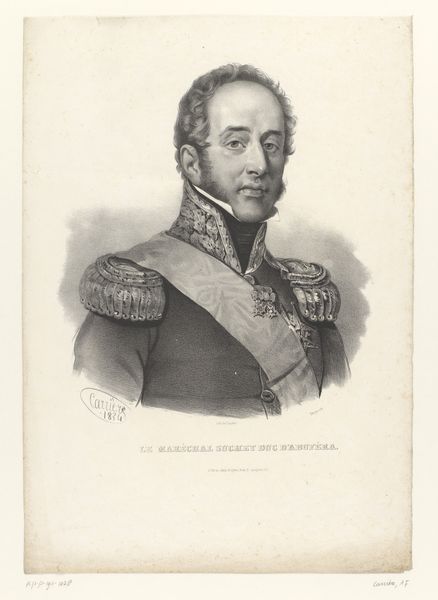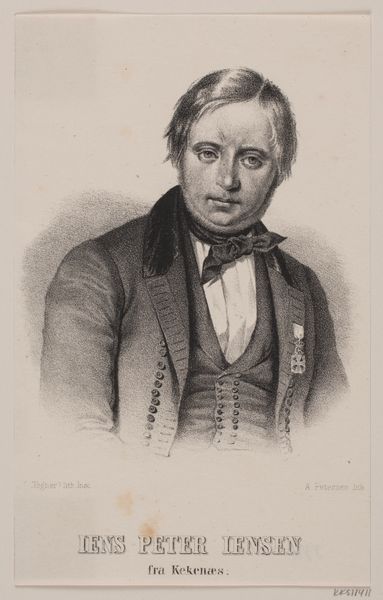
drawing, pencil
#
portrait
#
drawing
#
pencil drawing
#
romanticism
#
pencil
#
portrait drawing
Dimensions: height 100 mm, width 79 mm
Copyright: Rijks Museum: Open Domain
Curator: At first glance, there's a gentleness to this piece. The softness of the pencil rendering creates a real sense of intimacy, almost like a personal memento. Editor: Indeed. What we’re viewing here is a drawing from 1842, titled "Portret van Nicolaas Pieneman" by Coenraad Hamburger. It’s a portrait executed in pencil, a popular medium for capturing likenesses at the time. Pieneman was himself a well-regarded painter. Curator: Pieneman’s gaze is direct but not confrontational. The slightly upward tilt of his head might signify intellectual pride. The careful detailing of his hair and clothing adds to a sense of status, though conveyed with an undercurrent of approachability. He seems a person of substance, presented for public consideration. Editor: It’s fascinating how pencil drawings achieved popularity alongside early photography. The intimacy and perceived ‘honesty’ of a hand-drawn image held cultural cache, setting it apart from what could become the sometimes impersonal photographic portrait. This work fits into the broader romantic trend of idealizing individuals who contributed to society's moral and intellectual strength. The politics of imagery favored paintings but in civil society, portraits became cherished collectables in their own right. Curator: Absolutely, it’s about constructing a certain persona. His clothing lacks overt ostentation. There's a careful curation here, emphasizing bourgeois values perhaps, intelligence and refinement. Even the choice of medium—pencil—suggests humility, placing the emphasis on skill and character over pure wealth. Editor: That subtlety really captures a shift occurring during the period. Portraits became important indicators of civic contribution rather than mere declarations of inherited power. By studying details like this pencil medium and the choice of a softer tone over starkness, we can glean much about changing societal ideals. Curator: So, it seems we agree, more than a picture it’s a historical narrative condensed onto paper. Editor: Exactly, and each subtle detail acts as a symbolic element, revealing far more than just a likeness. It opens a door into a whole world.
Comments
No comments
Be the first to comment and join the conversation on the ultimate creative platform.
